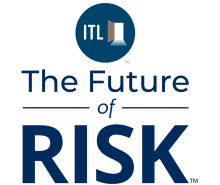The insurance industry is undergoing a profound transformation in 2025, powered by cutting-edge technologies designed to streamline operations, improve customer experiences, and mitigate risks more accurately. From artificial intelligence to blockchain, the future of insurance lies in embracing innovation. In this article, we explore the top 10 emerging insurance technologies in 2025 that are redefining the landscape for insurers and policyholders alike.
1. Artificial intelligence (AI) and machine learning
AI and ML are at the forefront of insurance innovation in 2025. They're being used to automate claims processing, detect fraud, and enhance customer service via chatbots and virtual assistants. Insurers are now using predictive analytics to assess risks more accurately and tailor policies to individual needs.
Key Benefits:
- Reduced operational costs
- Improved underwriting accuracy
- Personalized customer interactions
2. Blockchain technology
Blockchain is improving transparency and security in the insurance industry. Smart contracts allow for automated policy execution and claims processing, reducing disputes and human error. This is especially beneficial in life insurance and reinsurance where record accuracy is crucial.
Use Cases:
- Decentralized claims verification
- Real-time auditing
- Preventing double-dipping fraud
3. Telematics and usage-based insurance (UBI)
Telematics devices installed in vehicles provide real-time data on driving behavior. This tech is revolutionizing auto insurance by enabling usage-based insurance, where premiums are based on how safely you drive rather than static factors like age or location.
Advantages:
- Fairer premium pricing
- Enhanced driver safety
- Real-time accident response
4. Internet of things (IoT)
IoT-powered devices—like smart home sensors and wearable fitness trackers—are giving insurers access to real-time data that helps in proactive risk management. For example, a smart water leak sensor can notify both the homeowner and the insurer before major damage occurs.
Benefits:
- Fewer claims through early warnings
- More precise risk assessments
- Improved customer satisfaction
5. Robotic process automation (RPA)
RPA is automating repetitive back-office tasks such as policy issuance, data entry, and compliance reporting. In 2025, RPA tools are helping insurers save time and money while increasing accuracy and efficiency across workflows.
RPA Use Cases:
- Automated claims handling
- Real-time document verification
- Policy renewals and updates
6. Predictive analytics
Using big data and machine learning, predictive analytics can forecast future claims, identify high-risk customers, and refine underwriting processes. In 2025, it's also helping detect fraudulent behavior before it happens, which saves billions in potential losses.
Why It Matters:
- Better customer segmentation
- Fraud prediction and prevention
- Risk scoring and policy optimization
7. Chatbots and virtual assistants
AI-powered chatbots are more sophisticated in 2025, handling everything from policy inquiries to claims submissions. These tools offer 24/7 customer support and reduce the need for human agents, while also ensuring consistency in communication.
Main Features:
- Instant response time
- Multilingual support
- Integration with CRM systems
8. Augmented reality (AR) and virtual reality (VR)
While still emerging, AR and VR are being explored for claims processing and training. For instance, adjusters can use AR tools to assess damage remotely, and companies are using VR for employee training simulations in hazardous scenarios.
Innovative Uses:
- Virtual home inspections
- Risk scenario training
- Immersive customer engagement
9. Embedded insurance platforms
Embedded insurance allows coverage to be offered seamlessly at the point of sale—like travel insurance during flight booking or gadget insurance during an electronics purchase. In 2025, this model is streamlining policy purchases and expanding reach.
Notable Impacts:
- Frictionless customer experience
- Increased policy sales
- Better market penetration
10. Digital identity and biometric verification
With digital fraud on the rise, insurers are adopting biometric verification methods like facial recognition and fingerprint scanning to confirm user identities. This tech not only ensures security but also simplifies customer onboarding.
Security Enhancements:
- Faster KYC processes
- Reduced identity theft
- Seamless login and access
Final Thoughts
As we move through 2025, it's clear that insurance technology is no longer just about efficiency—it's about redefining how insurance is created, sold, and experienced. Companies that embrace these innovations will not only gain a competitive edge but also foster trust and loyalty among modern policyholders.
To stay relevant in this fast-evolving ecosystem, insurers must invest in digital transformation, cultivate tech partnerships, and prioritize customer-first innovation. The top 10 insurance technologies in 2025 aren't just trends—they're strategic necessities.








